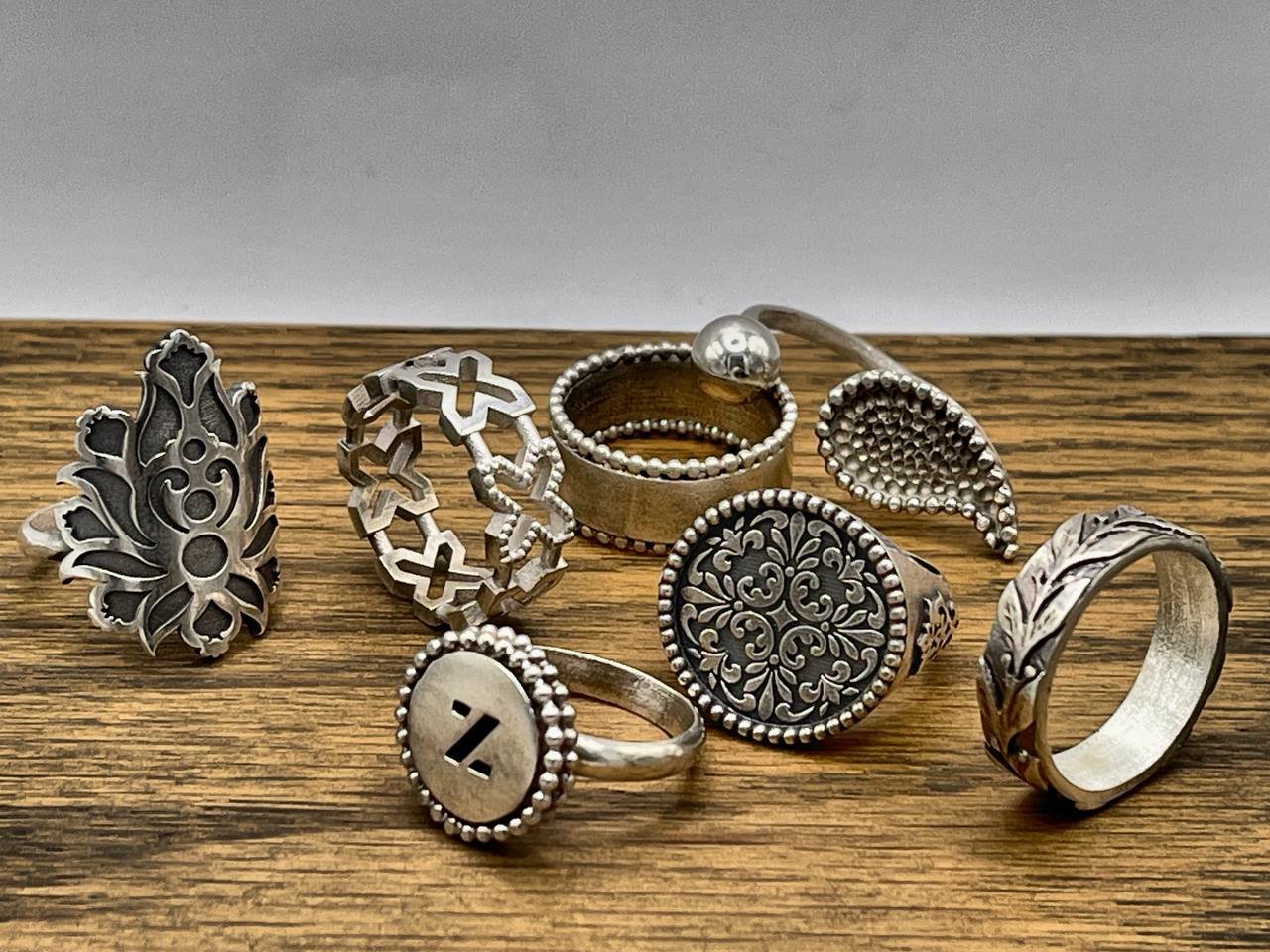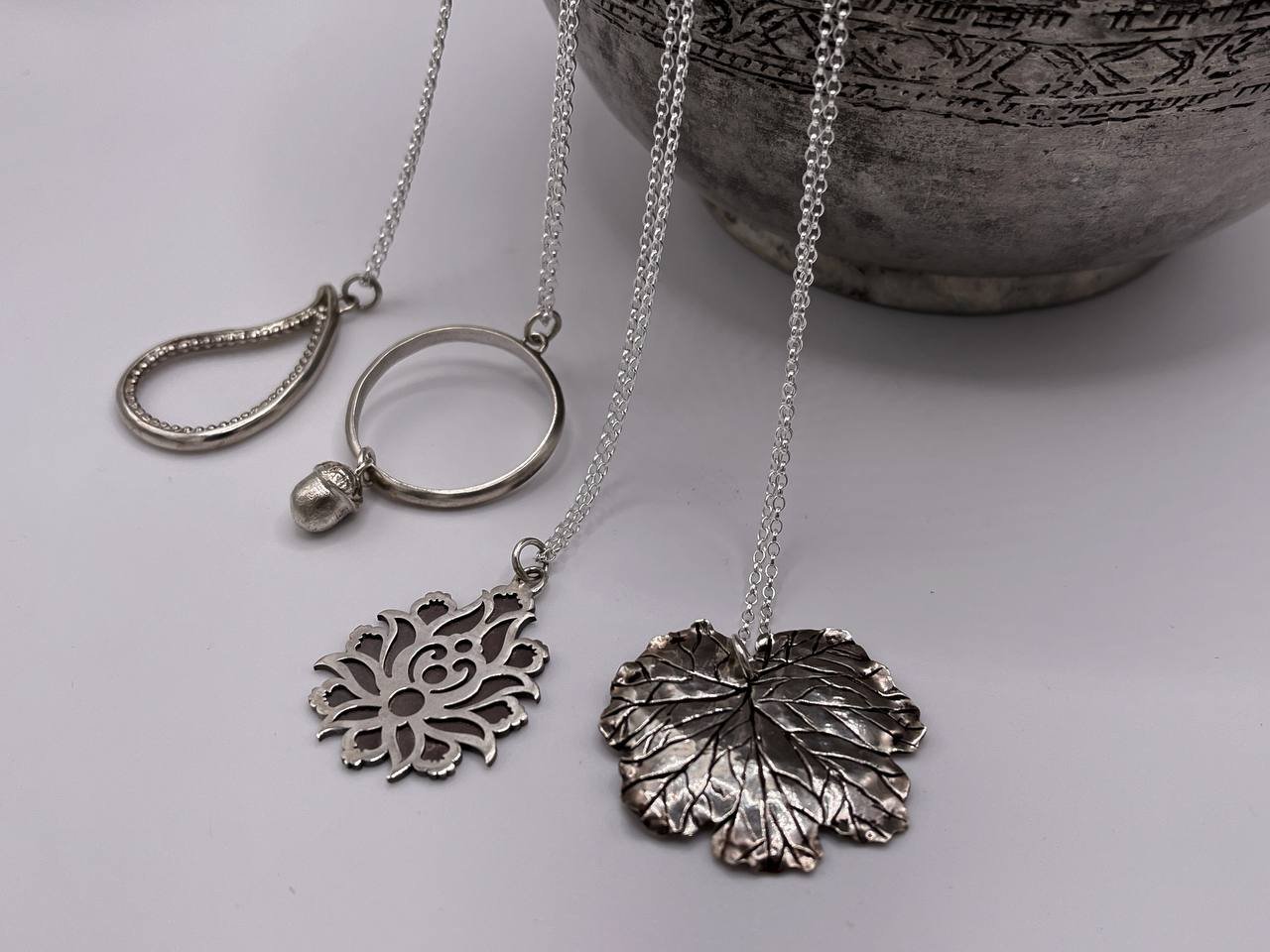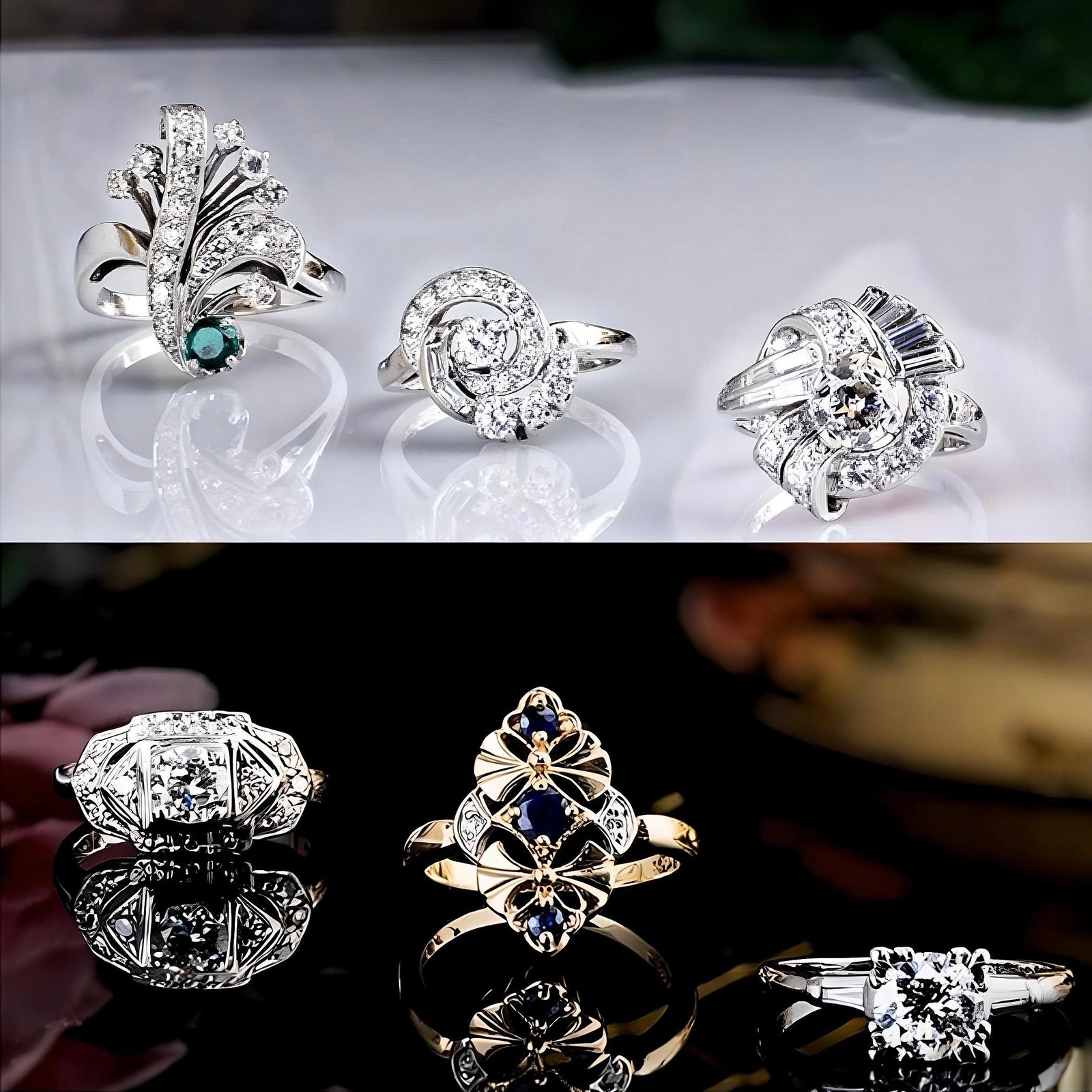Art Nouveau Jewellery (1890-1910)
Art Nouveau, meaning “New Art,” emerged in the late 19th century as a reaction against industrialization and mass production. It celebrated craftsmanship, organic forms, and flowing, asymmetrical designs inspired by nature. Art Nouveau jewellery is characterized by curvilinear lines, floral motifs, and ethereal depictions of women with long, flowing hair. Artists such as René Lalique, Georges Fouquet, and Louis Comfort Tiffany played a crucial role in defining this movement.
The materials used in Art Nouveau jewellery often included enamel, horn, ivory, and semi-precious stones rather than large diamonds or highly polished metals. The emphasis was on artistic beauty rather than material value. Techniques such as plique-à-jour enamel were commonly employed to create translucent stained-glass effects. The movement’s inspiration stemmed from Japanese art, Symbolism, and the Arts and Crafts movement, emphasizing a return to handcrafted beauty.
Art Nouveau jewellery was also known for its incorporation of mythological and fantastical elements. Winged fairies, mermaids, and nymph-like figures often adorned pendants, brooches, and hairpieces. The intricate craftsmanship and unique designs made these pieces highly sought after by collectors and connoisseurs of fine jewellery. Brands such as Lalique, Boucheron, and Tiffany & Co. were renowned for their exquisite Art Nouveau creations.
Art Deco Jewellery (1920-1935)
In stark contrast, Art Deco emerged in the 1920s as a response to the exuberance of the Jazz Age, technological advancements, and the influence of geometric abstraction. The movement embraced bold, symmetrical, and streamlined designs, reflecting modernity and industrial precision. Jewellery pieces from this era featured sharp angles, stepped patterns, and contrasting colours, often incorporating motifs influenced by Egyptian, African, and Aztec art.
Art Deco jewellery favoured luxurious materials, including platinum, diamonds, onyx, jade, and sapphires. The use of geometric shapes such as rectangles, triangles, and circles was prominent. Popular jewellery items included long, beaded necklaces, cocktail rings, and diamond-encrusted brooches. Designers such as Cartier, Van Cleef & Arpels, Boucheron, Jean Fouquet, Suzanne Belperron, and Raymond Templier played significant roles in shaping the Art Deco aesthetic.
A defining feature of Art Deco jewellery was its emphasis on machine-age sophistication and technological advancement. The precise cuts of gemstones, symmetry in settings, and use of industrial metals reflected a world increasingly influenced by speed, efficiency, and luxury. The period also saw the rise of statement jewellery, with pieces designed to complement the glamorous fashion of the 1920s and 1930s.
Comparison and Influence
Despite their differences, both movements left a lasting legacy in jewellery design. Art Nouveau’s emphasis on artistic expression and craftsmanship influenced later designers who sought to merge art with function. Meanwhile, Art Deco’s sleek, modern appeal continues to inspire contemporary jewellery trends.
Today, collectors and designers draw inspiration from both styles, often merging elements of organic Art Nouveau motifs with the bold geometry of Art Deco. Whether through vintage pieces or modern reinterpretations, these movements continue to captivate enthusiasts and shape the world of jewellery design.
Additionally, the enduring popularity of both styles can be seen in museum exhibitions, auctions, and high-end jewellery houses that continue to produce pieces inspired by these historical movements. Art Nouveau remains a favourite among those who appreciate delicate, nature-inspired designs, while Art Deco appeals to those who admire structured, high-contrast aesthetics. Modern brands such as Bvlgari, Chopard, and Chaumet incorporate elements of both Art Deco and Art Nouveau in their contemporary designs, bridging the gap between historical artistry and modern luxury.
In conclusion, Art Nouveau and Art Deco represent two distinct yet equally significant periods in jewellery history. While Art Nouveau embraced naturalism and romanticism, Art Deco championed modernism and geometric precision. Their influence endures, proving that artistic movements in jewellery are not just about adornment but also about reflecting the cultural and artistic spirit of their time. The lasting appeal of these styles demonstrates how art and craftsmanship intertwine, ensuring that jewellery remains not just an accessory, but a testament to human creativity and innovation.






